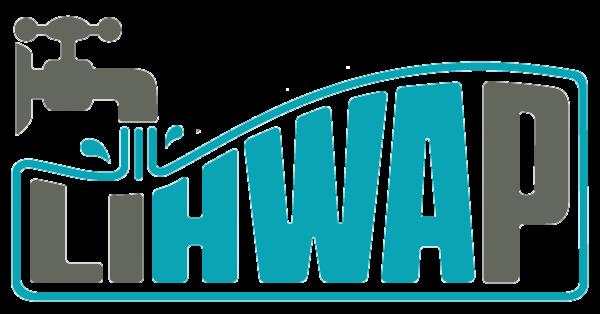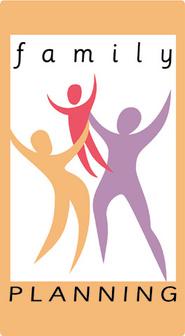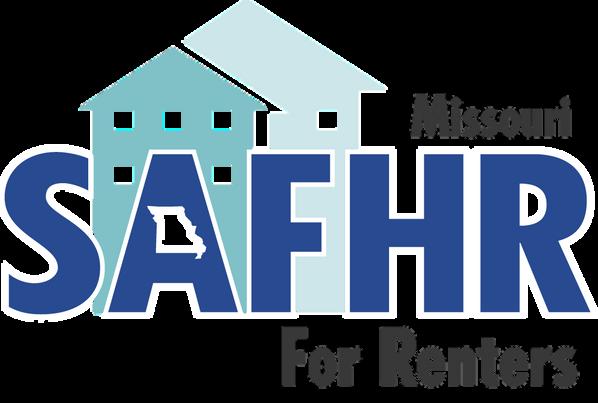










EMAA
Mission, Vision, & Values
History & Overview
Programs & Services
Methodology of the CNA Process & Data Analysis
Poverty Analysis of Service Area Barriers
Population Profile/Service Area Statistics
Income
Education
Employment
Housing
Nutrition
Health
Transportation
Other
Covid
Prioritization Summary
Barriers, Needs, & Potential Linkages
EMAA Areas of Focus
Supporting Documentation
Research Data
Survey Results
Listening Session Notes
Mission:EastMissouriActionAgencycultivatescommunities ofopportunityandsupportspeopleinreachingtheirhighest potential.
Vision:Communitieswhereeveryone’spotentialtothriveis unlimitedbycommunityconditions.
Values: At our natural best we are:
Compassionate: We care and go above & beyond for our customers and each other.
Nonjudgemental: We treat all people with dignity and respect.
Resourceful: We work together and with our communities to create solutions.
Dedicated: We don‘t give up on people, communities, or each other.

East Missouri Action Agency, Inc. (EMAA) was established in 1965 as a Community Action Agency under the Economic Opportunity Act signed into law by President Lyndon Johnson. For more than 50 years, EMAA has worked to promote initiatives and efforts that strive to end poverty and put low income neighborhoods and families on the track to self-sufficiency. Families and children in EMAA's eight county service area suffer from many hardships ranging from joblessness to hunger. These hardships present serious hurdles in creating a thriving community. There are also trends of underemployment, lack of decent, affordable housing, and children living in poverty in EMAA's service area. EMAA works to address these hardships through the agency's six departments.
In FY22, EMAA's provided the following services:
Community Services: Provided intake, assessment, and referrals (IAR) for 5,686 low income families, intervened in over 600 emergency crisis situations, and provided heating assistance to 8,443 families.
Head Start: Provided preschool, health screening, nutritious meals, and child development to over 650 children of low income families.
Housing: Provided housing rental assistance for low income families in 12 counties totaling 1,892 households and 4,730 individuals. Housing also provided weatherization services for 24 homes, home repair services, developed low income housing, and helped low income families achieve home ownership.
Women's Wellness: Provided reproductive care that included HIV tests and cancer screening(s) to 655 unduplicated clients with 1,115 visits.
Farmington Senior Center: Provided over 15,000 meals at the center and over 60,000 meals through in-home delivery by volunteers.
New Foundations: Provided hands-on training for 13 low-income individuals, completed one new build and one renovation in the programs first year.

The Community Services Department provides assistance to a range of low-income individuals and families within EMAA's service area. We take a holistic approach to ending poverty; starting by addressing the most basic needs, eliminating them and applying progressive programs designed to move families into financial freedom. Over 21,000 people received services last year through EMMA's various Community Service programs.
Representatives (CSR): are housed in all eight EMAA Outreach offices. CSR's analyze each household member's individual needs as well as the family as a whole. Referrals are made to EMAA programs as well as community partners and local resources based on identified needs.










Head Start is a child development program designed for three to five-year-old children from low-income families with the hope of breaking the cycle of poverty. Head Start is also governed by a policy council. The Head Start approach involves including the parent as the child's primary educator and getting the entire family and community involved Since 1965, Head Start has been helping meet children's needs by offering the following services:
Health - Medical and dental health screening and follow-up is designed to help children feel their best
Nutrition - Head Start serves a nutritious breakfast, lunch and snack and promotes nutrition awareness to help children build strong bodies
Parent Involvement/Social Services - Families, whose basic needs are met and who are involved in the lives of their children, provide their children with a wonderful head start in life!
Education - Our program is designed to meet the social/emotional, intellectual, language and physical needs of children
Diversity and Inclusion - Our program includes the presence of others with disabilities. At Least 10% of the children in our program have disabilities.
Mental Health - We contract with a licensed psychologist, our Healthy Living Counselor to provide services to children, families, and staff

St. Francois County Public Housing Agency provides rental assistance through the Section 8 Housing Choice Voucher Program which is funded by the U.S Department of Housing and Urban Development. St. Francois County Public Housing Agency currently administers approximately 1,892 Section 8 Housing Choice Vouchers in the counties of Bollinger, Cape Girardeau, Dunklin, Iron, Madison, Mississippi, Pemiscot, Perry, St. Francois, Ste. Genevieve, and Stoddard. The Housing Choice Voucher program is the federal government's major program for assisting very low income families, the elderly, and the disabled to afford decent, safe and sanitary housing
In the Housing Choice Voucher program, eligible families generally are required the pay 30% of their adjusted income towards gross rent. St. Francois County Housing Agency pays the difference between the amount of the required tenant payment and the gross rent. The Housing Department also administers a Housing Rehabilitation program through a Housing Preservation Grant from the U.S. Department of Agriculture. These programs target owner-occupied and are funded by the Missouri Housing Development commission

East Missouri Action Agency's Weatherization Program is funded by the U.S. Department of Energy through the Missouri Department of Natural Resources. The Weatherization Program provides energy conservation measures for homes occupied by the elderly, the disabled and families with small children, which are income qualified. Weatherization services may include: air filtration sealing, wall and attic insulation, floor repairs and insulation, and furnace replacement.

EMAA's women's wellness clinics provide reproductive health care services to women through three clinic sites covering all eight counties. All services are provided on a sliding fee scale, so that no one is denied health care based on their ability to pay. Medicaid and private insurance is also accepted. The bulk of funding for this program is generated through patient fees and donations. Additional funding is provided by state and federal monies such as Title X Family Planning grant
Services offered at the clinics include complete physical exams (including a Pap Smear}, serum screening, treatment for sexually transmitted diseases, breast exams, birth control methods, pregnancy tests and referral for prenatal care.
The clinic proudly participates in the Show Me Healthy Women Project which offers free breast and cervical exams for eligible participants, plus free followup mammograms and colonoscopies as needed.

EMAA operates the Senior Center in Farmington that provides opportunites for senior citizens to make new friends or reconnect with current friends they may not have seen for awhile, exercise their body in an exercise class, have a hot nutritious lunch then exercise their minds with by engaging in recreational activities in partnership with local resources.
The center provides lunches five days a week on-site and also has volunteers that deliver meals to seniors that are homebound. Receational activies include: computer classes, health screenings, line dancing, game day, quilting, woodcarving, paper doll making, and various activities sponsored by civic organizations
EMAA New Foundations was Established in 2022. The purpose of the program is to provide jobs and teach skills to those who are low-income so they can take skills learned and move on to jobs that provide a living wage The staff consists of a crew of 10 who go in and restore homes or build new homes
Additionally, EMAA New Foundations sells those homes at a reasonable cost to the community. The proceeds from the homes go to purchase new properties and any additional revenue becomes unrestricted dollars for the agency to support other programs.
The comprehensive Community Needs Assessment (CNA) presents an overview and analysis of the communities that East Missouri Action Agency (EMAA) serves and supports These communities consist of the following eight counties: Bollinger, Cape Girardeau, Iron, Madison, Perry, St Francois, Ste Genevieve and Washington EMAA is governed by a 24 member tripartite board The board consists of three representatives from each county representing the public and private sectors and one representative elected by our clients; ie: families with low income.
The CNA that follows and the data reported was obtained through: statistical data, surveys of individuals/families with low income, surveys of community partners, and local listening sessions. This method of data collection provides EMAA with a cross section of responses from stakeholders on how poverty issues are viewed in their communities. This allows EMAA to make well educated decisions regarding the needs of the communities we serve and helps provide invaluable information. This information is taken into consideration when addressing the needs and priorities of the communities we serve and how we will deliver programs and services to aid in our mission to help move people out of poverty.
The CNA is based on statistical and demographic data that was collected from a variety of reliable sources to ensure that all data is current and relevant. These sources include the MOCAN Community Needs Assessment toolkit, U.S. Census, American Community Survey, and other reliable and valid resources.
EMAA received 594 responses from individuals/families with low income and community partners (service providers, education, health, law enforcement, elected officials, board members, faith based, and business community members) The survey was emailed to community partners and clients, posted on the agency social media, and shared in all outreach offices with every person who visited for services
The surveys contained questions targeted at seven areas known to impact poverty in communities: Income, Education, Employment, Health, Housing, Nutrition, and Transportation. Each of the areas explored; revealed causes, barriers, gaps and linkages to poverty issues within the communities we serve.
Listening Sessions held at the local level were key in gathering opinions, anecdotes and local community knowledge needed to provide a grass root view of poverty issues within the communities we serve.
All of the data collected is compiled in the following report. EMAA analyzed the data and reviewed responses to help determine root causes. This then has allowed us to turn our focus to setting priorities to address these needs. EMAA also utilized the leadership team as well as other agency staff during this process. These processes can be explained in detail in this assessment document under the Data Analysis and Priorities tabs.
Each year EMAA collects Customer Satisfaction Surveys from clients in all locations and departments in the agency Those survey results are compiled and looked throughout the year and presented fully to the board at the end of each fiscal year Both the leadership team, board, and direct staff review the results to ensure customers needs are met, and improvements can be made from year to year
Beginning in February 2023, East Missouri Action Agency conducted a Comprehensive Community Needs Assessment. East Missouri Action Agency provides assistance and services to residents of eight counties in Southeast Missouri. These counties are Bollinger, Cape Girardeau, Iron, Madison, Perry, Ste. Genevieve, St. Francois and Washington. The results of the comprehensive assessment are included in this document.
Assistance to residents is provided by six departments within the agency:
Community Services
Head Start
Housing
Women's Wellness
Farmington Senior Center
New Foundations
Statistical data came from a variety of sources including (but not limited to) MOCAN network, census, University of Missouri, family services, Annie Casey foundation and HUD. The information presented is the most recent data available.
Qualitative data was collected via a paper survey that included questions on demographic information as well as questions targeted at the seven poverty barrier area characteristics:
Income Education Employment Health
Housing Nutrition
Transportation
From March through July 2023, each department provided the surveys to those seeking and/or receiving assistance. The target population for this survey was individuals with low income. This survey was emailed to program participants and community partners within the eight count service area. The survey was posted on the agency’s Facebook and shared within many groups in each county
Lastly, East Missouri Action Agency conducted in-person listening sessions in each of the eight counties. Participants were a mix of community members from education, health, Board of Directors, public officials and other services providers. Questions to the group focused on how they viewed poverty in their community and included questions related to the seven issue area characteristics.
East Missouri Action Agency utilized the leadership team to review the data collected. Groups were then assigned a characteristic to further review and conduct a root cause analysis. Their findings were presented to the team for further discussion. Those findings will be presented in the Poverty Analysis of Service Area Barriers.


Education Completion Rates:
Early Ed. Enrollment
861,494 K-12 Missouri State 5,240 State of MO
Higher Ed Enrollment 1,366 Homeless Students
339,213 State of MO
According to DHSS EMAA service area has 111 licensed childcare facilities and 5,112 spots.
25% surveyed have some college experience
Education Barriers
“Equity among encouraging HS students to continue education or vocational training is a must. Students whose families may not encourage higher education or skills at home lack the opportunities offered to some of their peers, based on biases of school staff.” Avg Childcare Cost $112 per week -Infants $94 per week - Preschool $88 per week - School Age Student Enrollment Rate HS Graduation Rate: 92.5%
82% surveyed said they were aware of various financial aid options. 19% surveyed said they had a HS Diploma
Those Surveyed Reported:
59% - High Cost
49% - Had to Work
27% - Lack of Childcare
24% - Transportation
Employment Data for Service Area:
2.8% on Unemployment
*Sector w/highest unemployment is accommodation and food services in MO..
Employer Related Barriers
*Skilled Workers, Economic Conditions, Gov. Policies, Lack of Childcare, Lack of Transportation - Based on 2021 Employer Survey Report
55,600 - Jobs Created May 22 to May 23 or 1.1% increase from 2020 to 2021
SSDI: 59,550 - Individuals/25%
Health Care/Social Asst. & Retail Trade
*largest growth industries
2 Vehicles Per Household
*Missouri State Average
Employment Survey & Listening
- Carpool
- Work From Home
-
- Taxi/Other
- Public Transportation
Survey Employment Results: 76% of individuals surveyed reported they are not actively seeking employment.
48% of individuals surveyed indicated jobs did not pay enough to support a family without assistance. 63 % of individuals surveyed indicated there was no chance for advancement.
Listening sessions and survey results indicated the following as barriers to employment.
lack of opportunities to advance lack of transportation
lack of access to childcare lack of education
Overcrowded Rate
Homelessness Rate:
Region 1 Point in Time
200 Individuals Homeless
*MOBOSCOC
*Also note due to severe weather not every county is counted
*Region 1 consists of more counties that EMAA’s service area
18.76% of renters and 6.59% of homeowners in the EMAA Service Area pay more than 50% of their income towards rent or mortgage.
Average Homes without Plumbing in the EMAA Service Area is 44%, which is higher than the state average of .40%.
There are 107,897 housing units available in our service area. With Cape Girardeau County and St. Francois County having the most housing units.
59% said affordability is a barrier.
75% of those surveyed believe there is a lack of housing. 38% Low Credit Score
A majority of those surveyed reported multi-generational housing environments.
Most of the EMAA service area has no transitional/supportive housing units. Also, participants in every count reported that they have witnessed an increased homelessness in their community. 91% of those surveyed said they have experienced homelessness.
High Utility Costs
Our community believes housing needs are related to:
lack of decent and safe housing lack of housing in general lack of affordable housing concerns with unethical landlords behaviors/practice
57% of Students are Provided Free & Reduced Lunches
*6 of 8 counties have rates higher than the state rate of 48%
*Wash Co is at 75%
33,830 or 14% of the service area population report food insecurities.
*3% higher than the MO state average.


EMAA Service Area has 8 Farmers Markets

9.1% of children age 0-5 in the EMAA service area are eligible for WIC.

15,706 Households
Avg. Monthly Benefit: $245

In 2019 area Food Banks distributed 4,920,032lbs of food.
16% of children in the EMAA service area are food insecure.
According to the USDA Iron, Madison, and Washington Counties are low income and have low access to food.
64% of those surveyed said they are unable to afford nutritious food.


38% of those surveyed are not eligible for SNAP benefits.
“Food!!! It’s gotten so expensive and pantries cannot help with FRESH fruits and veggies.”
Client Survey Comment
19% of those surveyed travel 6 to 10 miles for food.
“Even when given fresh fruits and veggies from a food pantry, many don’t know how to prepare or store fresh items.”
EMAA Board Member
Our communities stated they face the following barriers when it comes to access to food and healthy food:
high cost compared to convenient/processed foods
lack of access for fresh foods
lack of knowledge on how to store and prepare fresh foods
Hospitals/Behavioral Health Centers
Bollinger - 0 Cape - 4
Iron - 1
Madison - 1
Perry -1 St. Francois - 3
Ste. Genevieve - 1 Washington -1

The EMAA Service Area average of 9.67% who are uninsured.
Infant Mortality Rate: 6.o for every 1,000 babies born.
EMAA counties have 261 licensed professional counselors (MO Division of Prof. Registration) and 10 Mental Health provider listed by DMH, This is a ratio of 1.08 counselors per 1,000 persons.
There are currently only 80 dentists to serve EMAA’s 8 county service area.
There are currently 5 Federally Qualified Health Centers serving EMAA’s 8 county service area.
Leading Cause of Death


Methods of Commute:
82.1% - Drive
5.2% - Work From Home
1.3% - Bike/Walk
1.2% - Taxi/Other
10% - Carpool .03% - Public Transportation

8.3% of Missouri Households have no motor vehicle.
*mobikefed.org
EMAA’s service area has public transportation access in all 8 counties, however it is not readily available as needed.
$1,698 is the average cost of car insurance in Missouri. 11% higher than the national average.
*Liberty Mutual
83% of those surveyed said they owned their own vehicle.
Those w/out Vehicles: 58% - Walk
48% - Rely on Friends 11% - Utilize SMTS
12% - Cab/Uber/Etc.
31% surveyed stated lack of transportation impacted their ability to maintain employment. cost of owning and maintaining a vehicle
Lack of transportation prevents people from taking better paying jobs and from accessing skills training that would lead to increased income.
Barriers to transportation expressed by community members included:
lack of public transportation (too expensive to ride, availability is very limited or nonexistent).
Knowledge of available transportation options.
Voter Registration by County
Bollinger - 8,521
Cape - 49,431
Iron - 5,967
Madison - 8,186
Perry - 13,324
St. Francois - 41,341
Washington - 13,544
4,910 Property Crimes Reported
Larcenies - 3,630
Burglaries - 828
Auto Theft - 416
Arson - 36
Additional Veteran Data
EMAA Service Area: 15,452
Males: 14,283
Females: 1,169
Arson - 36
MO Homeless: Est. 499
Median Income: $61,339
650 Total Violent Crimes Reported
Aggravated Assault - 499
Forcible Rape - 68
Armed Robbery - 67
Homicide - 12
Attempted Rape - 3
Involuntary Manslaughter - 1
11% of Missourians do not have broadband internet at home.
*MO Department of Education
Of those surveyed 69% said they have broadband access and 31% do not. 38.11% of those surveyed stated their home needed extensive repairs.
Top 5 Housing Expenses *of those surveyed
“Funding/assistance for those who fall just over the set amounts to help families that are struggling.”
Client Survey Comment
59% of Missourians are considered COVID vaccinated.
*USAFacts.org and John Hopkins U
20,776 COVID in Missouri from August of 2020 to December of 2022


$1.17 Million in CARES
CSBG Funding and $3.8 Millions in LIHEAP ARPA Funding
$1.47 Million to Head Start, providing summer school, PPP, and help with staffing.



$1.4 Million through Emergency Solutions Grant to house those who were homeless to prevent the spread of COVID.
Assisted 230 Households with rent assistance, preventing evictions and homelessness.
$227,892 in CARES funding for HUD and 63 Emergency Housing Vouchers.
35.3% of those surveyed said they have had long term symptoms from COVID-19.
In EMAA’s 8 county service area 44 businesses have closed since the beginning of COVID-19
“We learned from COVID how important it is to be connected to one another as staff and as a community. We have worked intentionally over the last year to be available to our community in person and to rebuild our connections.”
East Missouri Action Agency conducted a Community Needs Assessment for their eight county service area. The counties in our Southeast Missouri service area are: Bollinger, Cape Girardeau, Iron, Madison, Perry, Ste. Genevieve, St. Francois and Washington.
The community needs assessment process was carried out by collecting both quantitative and qualitative data from a variety of reliable sources. Over 600 individuals with low incomes and community partners participated in the survey and in-person listening sessions conducted in all eight counties in the EMAA service area. Listening Sessions were comprised of a diverse mix of community partners that included members of various faith based organizations, United Way, Salvation Army, housing specialist, school district personnel, ambulance district staff, health departments, University of Missouri extension offices, elected public officials, Board members, retired educators, HSET(High School Equivalency Test) staff, Community Health Workers, community partnerships, food pantry operators, EMAA department directors and front-line staff.
Eight issue areas of concern were analyzed during this process. Those issue areas were Income, Education, Employment, Health, Housing, Nutrition, Transportation and Other. Results from the analysis of both quantitative and qualitative data in each of the issue areas revealed causes of poverty, barriers to getting out of poverty, gaps in services, and existing and needed community linkages.
Barriers were identified in each of the issue areas and are listed below:
Income: Lack of living wage jobs, lack of transportation, lack of access to childcare, and lack of access to training opportunities to enhance employment.
Education: High cost of tuition and fees, transportation, and affordable childcare.
Employment: Lack of opportunities to advance, lack of transportation, lack of access to childcare, and lack of education.
Housing: Lack of decent and safe housing, lack of housing in general, lack of affordable housing, and concerns with unethical landlord behaviors/practices.
Nutrition: High cost of nutritious foods compared to convienient/processed foods, lack of access to fresh foods, and lack of knowledge on how to store and prepare fresh foods.
Health: Lack of adequate access to needed services such as mental health services and dental care, high prescription cost prevents obtaining needed medications, lack of knowledge of how to access and utilize health insurances, and lack of preventative care/waiting until health crisis to seek care.
Transportation: Cost of owning and maintaining a vehicle and lack of public transportation.
Needs were identified in each of the issue areas and are listed below: Income: Funding for training, access to transportation, and access to childcare.
Education: Funding for training/tuition, access to transportation, and access to affordable childcare.
Employment: Opportunities to enhance education/training, access to transportation, and access to childcare.
Housing: Access to safe, decent, and affordable housing and advocacy for more housing and fair landlord oversight.
Nutrition: Access to affordable nutritious foods and education on how to store and prepare fresh foods.
Health: Access to needed services and education around accessing and utilizing health insurance.
Transportation: Access to affordable transportation.
Each of the seven issue areas were discussed and potential linkages that need to be created are listed here:
Income: Increasing access to affordable childcare during work hours in the EMAA service area is not within the capacity of the Agency. EMAA has been a voice in the community for improving public transportation and will continue to advocate on behalf of families we serve. Staff will promote resources for potential funding (WIOA, WAP, etc ) Staff will work with individuals to access childcare assistance (vendor care )
Education: Higher education and/or skills training is directly related to better job opportunities. EMAA will continue to promote the benefits of such to families we work to create links to training opportunities and work within the communities to eliminate identified barriers such as cost, childcare and transportation.
Employment: EMAA will work with Missouri Job Center and other employment organizations. EMAA will continue to advocate with local elected officials to develop better access to public transportation. Agency staff will increase efforts to promote entrepreneurship and exposure to SEED$. Agency staff will continue offering programs such as SkillUP and make referrals to other programs to assist individuals in obtianing living wage jobs.
Housing: Agency staff will work to develop local resources to help with costs of housing. Agency staff will work with local elected and civic leaders to seek funding for safe, decent and affordable housing Staff will continue to collaborate with New Foundations to support and promote affordable housing in the service area
Nutrition: Agency staff will communicate with local chambers of commerce on the need to establish or expand hours of operation for farmers markets. EMAA will work to create a linkage to potential services offered by Missouri Extension offices for education on storing and preparing fresh foods. Staff will continue to connect families with local food pantries and food giveaways.
Health: Agency staff will seek out resources and explore the use of funds to help offset high prescription costs. EMAA will continue to advocate with State elected officials for increased access to needed services. Agency staff will continue services such as: ACA Navigation and education on Medicaid Expansion.
Transportation: EMAA will continue to communicate with local public transportation providers regarding access and affordability. Agency staff will work with local chambers of commerce as well as local elected officials, to point out the disparity between income of working individuals and vehicle ownership with hopes to have them advocate to employers regarding improving local wages
During the Community Needs Assessment process, which included the collection of both quantitative and qualitative data, comparison of data from the last CNA, and a root cause analysis of the data collected by a panel of EMAA Leadership, Staff, Board Members, and Community Members indentified the following priorities for the EMAA Service Area. The CNA can be found on EMAA’s website, can be requested electronically, and be mailed or printed.
Mitigating barriers such as lack of access to safe, decent, and afforable housing is a priority that EMAA feels they have the capacity to address and have a positive impact in the community and families served

Mitigating barriers such as lack access to funding for training, living wage jobs, transportation, and childcare are priorities, and that by addressing these, families will have opportunities to become more self-sufficient.
Mitigating barriers such as lack access to funding for tuition and fees, transportation, and childcare are priorities, and that by addressing these families will have improved access to educational and training opportunities that can lead them to being more selfreliant.
Mitigating barriers such as lack access to living wage jobs, funding for training/education, transportation, and childcare are priorities, and by addressing these families will have increased opportunities to enhance employment and economic mobility.

Helping People, Changing Lives Since 1965